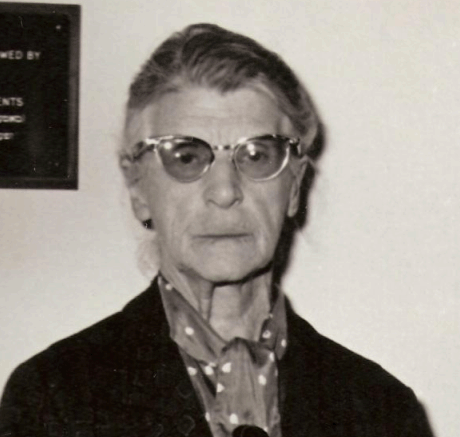
It was written in the stars that Mary Gordon, making a priestly vocation of the practice of medicine, would become the doctor in overall charge of the Jewish wing of the British Military Hospital in Nicosia, in the fateful 1947/1948 period. This woman, brusque outside, flame-lit inside, was born to serve.
In 1922 during the bitter miners’ strike on the Witwatersrand, General Dr. MacKenzie, Superintendent of the Johannesburg General Hospital convened a meeting on humanitarian grounds calling for volunteers to render medical aid to the wounded and dying of the besieged miners in Fordsburg. Dr. Gordon, then 32, stepped forward immediately. There was only one other volunteer, Dr. Bensusan, also Jewish. Under cover of the Red Cross, both reached the miners’ lines safely and worked unremittingly among them.
Mary Gordon served the Johannesburg General Hospital for thirty years. She was its first woman doctor and the first woman on its honorary staff. She became physician in charge of wards. Later she acted as senior physician, doing part-time and honorary work. She lectured at the Medical School, first in anesthetics and later in clinical medicine. A generation of doctors passed through her hands. In 1939 she was planning to leave for Palestine when World War II broke out. The South African war authorities would not release her. War’s end found her a major at Roberts Heights, Pretoria, a consultant physician. She told the army she would stay on if it would send her up north (military hospitals were still there). Palestine was in her mind. There she set foot in 1946, wearing the not fondly regarded British uniform. The Stern group hounded her.
Unable to secure an immigration certificate, she returned to South Africa in August 1946 after a stay of only three months.
But nothing could stop this determined woman. She quit the South African Army, resigned from all her employment at the Johannesburg General, the University and the Transvaal Education Department, turned her back on what was possibly the largest private practice in Johannesburg and left for Palestine on October 18, 1946, as a “temporary laborer with WIZO” as her passport had it. As such, she had periodically to get her visa extended.
She was back to the austere living of her youth. There were nine camps for the refugees in Cyprus. The camp population increased or decreased according to various accidental circumstances. For example, British naval patrols captured three refugee ships in February 1948 and the population went up by 1,648. On the other hand, 5,386 were allowed to leave under a new special infants and youth quota. This was exceptional. The regular monthly quota of Palestine certificates was 750.
When Dr. Gordon arrived in Cyprus shortly after the partition decision, the total camp population was 30,000. Financial responsibility for its welfare was borne by the Jews of the world through the American Jewish Joint Distribution Committee (JDC or Joint).
A section of the British Military Hospital in Nicosia was given over to the Joint and became the Jewish wing. There were three wards: medical, surgical, and maternity, part of a complex of buildings in large grounds, with the Jewish wing put behind barbed wire and with a separate gate and pass system Dr. Gordon became the main communication link between the Joint and the British.
What was thenceforth played out in that setting was that not uncommon aspect of war, in which medicine operates on its own superior level, remote from the abrasions and poisons of political conflict. Jewish doctors and nurses took over from the British in the medical and maternity wards, but British surgeons continued to work in the surgical ward.
Dr. Gordon and Tova Friedman, an Israeli nurse close to the South Africans, found Palestine and Cyprus two different worlds. In Palestine, the British were the imposers of curfews and the tough searchers at roadblocks. In Cyprus hospital, they were friendly and considerate, from surgeon to orderly to sentry at the gate. There were fraternal evenings between British personnel and the patients, celebration of birthday parties and friendships. The case that particularly imprinted itself on the minds of the two women was that of a refugee with a bad skin disease, a rare kind of disease for which a special medicine had become available. The treatment required that every four hours, day and at night, the patient should be stripped of the bandages all over his body for new bandages. A British staffer working in the laboratory made this his special duty, giving the task an uncommon conscientiousness, and the patient an uncommon devotion.
Dr. Gordon was more than a doctor. She was the shade of a Banyan tree. Her patients were not ordinary patients but people whose lives had been cataclysmic. Their great need was a fount of compassion, an ear open to listening, a confidante with “a soul.” Mary Gordon became Mother Mary.

